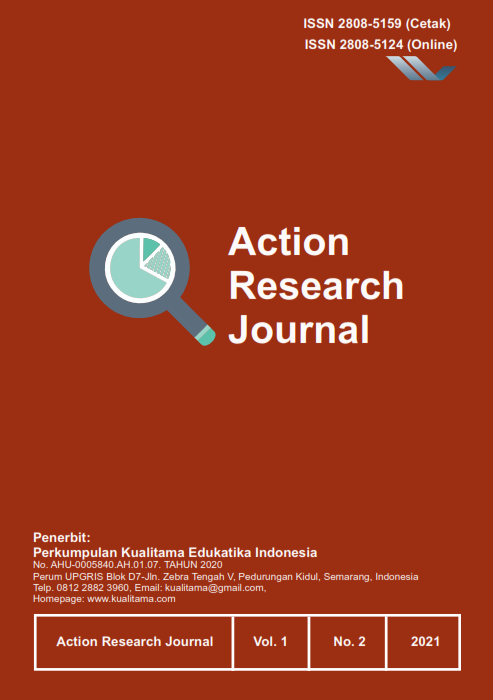Pengembangan Supervisi Berbasis STEM untuk Meningkatkan Mutu Pembelajaran
Main Article Content
Abstract
The concept of supervision is basically the provision of assistance, the problem that arises is how to provide assistance to make students more capable, skilled in collaborating in science and technology so as to increase the effectiveness of the learning process in schools. This is in accordance with the principle of supervision according to Law Number 14 of 2005. From the field analysis, it shows that the existing supervision of learning is not in accordance with 21st century learning so that it is necessary to develop a STEM-based supervision model with learning syntax with a STEM-based approach that is possible to improve learning in the classroom. SD in order to improve the quality of education. Development is carried out through the stages of defining, planning and developing. The test was carried out using the SPSS validation test and field validation to determine the effectiveness of the STEM-based learning supervision instrument. The field trial design was carried out at 10 elementary schools in Petungkriyono District, Pekalongan Regency with sampling techniques using documentation, observation and questionnaires. The results of expert validation state that the STEM-based learning supervision development instrument is well developed and can be used with slight revisions, the results of which can be used by the principal to carry out supervision in improving the quality of learning.
Article Details

This work is licensed under a Creative Commons Attribution-ShareAlike 4.0 International License.
References
Boy, G. A. & Yakman. (2013). STEAM (Science Technology Engineering Art and Mathematics).
Colucci-Gray, L., Burnard, P., Cooke, C., Davies, R., Gray, D. & Trowsdale, J. (2017). BERA Research Commission Report: Reviewing The Potential and Challenges of Developing STEAM Education Through Creative Pedagogies for 21st Century Learning: How Can School Curricula Be Broadened Towards A More Responsive, Dynamic and Inclusive Form of Education?. London: British Educational Research Association.
Fathurrahman, P. & Suryana, A. A. (2011). Supervisi Pendidikan. Bandung: Refika Aditama.
Guru Sumedang. (2021). Pendidikan Abad 21 Apa dan Bagaimana (Kemdikbud). https://www.gurusumedang.com/2021/03/pendidikan-abad-21-apa-dan-bagaimana.html
Maralih. (2014). Peranan Supervisi Dalam Peningkatan Kualitas Pendidikan. Jurnal Qathrunâ, 1(1), 179–192.
Muslim. (2009). Supervisi Pendidikan Meningkatkan Kualitas Profesionalisme Guru. Bandung: Alfabeta.
Perignat, E., & Katz-Buonincontro, J. (2019). STEAM in practice and research: An integrative literature review. Thinking Skills and Creativity, 31, 31–43. https://doi.org/10.1016/j.tsc.2018.10.002
Quigley, C. F., Herro, D., & Jamil, F. M. (2017). Developing A Conceptual Model of STEAM Teaching Practices. School Science and Mathematics, 117(1-2), 1–12.
Sanders, M. (2009). STEM, STEM education, STEMmania. The Technology Teacher, 68(4).
Suhardan. (2010). Supervisi Profesional (Layanan dalam Meningkatkan Mutu Pembelajaran di Era Otonomi Daerah). Bandung: Alfabeta.
Sugiyono. (2011). Metode Penelitian Kuntitatif, Kualitatif, dan R&D. Bandung: Alfabeta.
Tatang, S. (2016). Supervisi Pendidikan. Bandung: Pustaka Setia.
Yildirim, A. (2013). Student Teachers Perceptions About Their Education Supervisors Role. Educational Research and Reviews, 8(3), 112-120.
